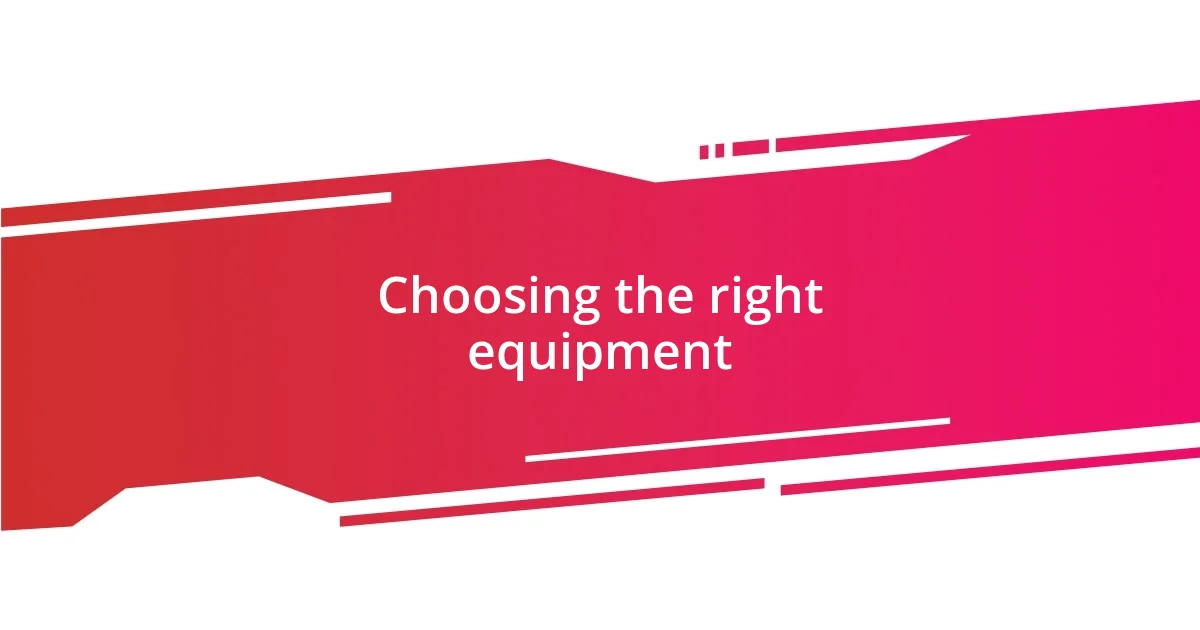Key takeaways:
- Mastering shuffleboard basics, including court layout and scoring, is essential for developing strategy and skill.
- Choosing the right equipment, such as pucks and tables, significantly enhances gameplay and aligns with individual playing styles.
- Regular practice, including setting target areas and tracking progress, builds confidence and refines skills for better performance.

Understanding shuffleboard basics
When I first approached shuffleboard, I quickly learned that mastering the basics is crucial. Understanding the court layout and the importance of the playing surface can make a significant difference. Have you ever felt the frustration of sliding your puck just a bit too far? That initial learning curve taught me that the angle and force you apply are everything.
As I spent more time practicing, I realized the value of knowing the scoring system. The thrill of scoring those coveted 10 points—and the pride that comes with it—kept me motivated. Did you know that just one well-placed shot can shift the momentum of the game? It’s a game of strategy as much as it is about skill, and I found myself contemplating each move deeply.
Choosing the right shuffleboard pucks also became a part of my journey. At first, I simply picked whatever looked good, but I soon discovered how the weight and material impact performance on the board. There’s something incredibly satisfying about finding that perfect balance, isn’t there? Every element, from court type to puck choice, plays its part in this intricate dance of skill and precision.

Choosing the right equipment
Choosing the right equipment plays a pivotal role in enhancing your shuffleboard experience. I’ll never forget the moment I switched from a basic set of pucks to a more professional-grade pair. The difference in control and glide was staggering! It truly felt like I went from driving a sedan to racing a sports car on the board.
When assessing shuffleboard tables, I found that size and material greatly affect gameplay. A heavier table might provide more stability, allowing for smoother shots. Alternatively, lighter tables offer faster gameplay that can quickly change the pace of a match. With each game, I often reflect on how the choice I made before the first slide influenced the outcome.
Lastly, ensure that the pucks align with your playing style. Some prefer lighter pucks for quick maneuvers, while others, like myself, enjoy the precision of heavier ones. I remember asking a friend for advice on the weight, and his suggestion transformed my game. It just goes to show how evaluating equipment thoughtfully can elevate your shuffleboard skills.
| Equipment | Description |
|---|---|
| Shuffleboard Table | Consider the size and weight for stability and gameplay speed. |
| Pucks | Choose pucks based on weight—lighter for speed, heavier for control. |

Mastering grip and stance

Mastering grip and stance
Finding the right grip and stance was a game-changer for me. Initially, I struggled with inconsistency; my shots often veered off course. However, when I focused on a comfortable grip—holding the puck in a way that felt natural yet controlled—I noticed a remarkable improvement. I often recall the time I consciously adjusted my hold: the puck glided smoothly down the table, landing right where I wanted. It felt like unlocking a hidden level in the game!
In terms of stance, maintaining a balanced posture is essential. I’ve learned that slight adjustments can influence your accuracy significantly. Here are some practices I found helpful for refining grip and stance:
- **Grip Placement:** Hold the puck between your thumb and fingers, ensuring it feels secure but not tense.
- **Body Alignment:** Stand squarely facing the target with your feet shoulder-width apart for stability.
- **Weight Distribution:** Keep your weight slightly forward, which provides greater control during your shot.
- **Knee Bend:** A gentle bend in your knees can enhance balance, allowing for a smoother slide.
- **Practice Your Release:** Experiment with different release points to find what feels most comfortable and effective.

Developing effective slide techniques
I discovered that developing effective slide techniques is all about finding the right approach for your unique style. I remember the first time I paid close attention to my sliding motion—I felt like a dancer gliding across a stage, effortlessly moving the puck just where I wanted it to go. It’s essential to engage your core and use your arm to propel the puck while keeping your wrist relaxed.
Getting the slide distance right took me a while to master, but I learned to visualize my shot’s path. Have you ever noticed how a tiny adjustment in your push can completely change the puck’s trajectory? That realization hit me during a friendly match when I incorrectly estimated my slide and overshot the target. Since then, I’ve focused on consistent follow-through, making each slide feel smoother and more intentional.
Practicing in different scenarios has been invaluable for honing my skills. I often set small challenges for myself, like aiming for specific zones on the board with varying slide lengths. Reflecting on these moments, I feel a sense of accomplishment each time I hit my target, understanding that each practice session fuels my improvement. It’s incredible how the details in your slide technique can significantly shift the outcome of a game!

Refining your aiming methods
Refining your aiming methods is crucial for consistency and precision in shuffleboard. For instance, I remember a particular game where I felt so confident about my aim that I almost didn’t hesitate before sliding the puck. But as it glided down the table, I realized I had aimed slightly too far to the left. It was a small misjudgment, yet it dramatically altered my shot’s outcome. This experience taught me the importance of thoroughly visualizing my aim before making my move.
In my journey, I’ve found that setting an intention with each shot helps me focus better. When I concentrate on a specific target area, my aim becomes more deliberate and less erratic. Have you ever noticed how grounding yourself with a simple thought can shift your performance? I recall a moment at my local shuffleboard club when my mind wandered, and my puck missed the target by a wide margin. That day, I committed to mentally marking my aim and found that my shots became far more accurate.
Lastly, the practice of aligning my body and line of sight with the target has greatly improved my aim. I often take a moment to breathe and mentally “connect” with the far end of the board. In a particularly tense match, this mindful pause helped me regain focus and sink my shots with confidence. It’s these little nuances in your aiming technique that, once refined, can transform your gameplay entirely!

Analyzing opponent strategies
Analyzing opponent strategies adds a whole new layer to the art of shuffleboard. I vividly recall a game where my opponent consistently utilized a defensive tactic—aiming for the edges rather than the center. I found myself questioning my approach; should I play aggressively or adopt a more cautious style? This realization highlighted the necessity of adapting my strategy based on how my opponent played.
Engaging with my opponent’s moves can offer valuable insights into their mindset. For instance, during a nail-biter match, I noticed that when my adversary aimed for the higher scoring zones, they appeared far more confident, yet also reckless. I began to exploit their overzealousness by aiming for lower scores, forcing them to rethink their strategy. It’s fascinating how understanding their tendencies can shape your game and even shift the momentum in your favor.
Furthermore, I’ve learned the importance of observing non-verbal cues. Once, during a final match, my opponent’s body language shifted when I made a strategic shot that blocked their path. It was a mix of frustration and determination. Recognizing that moment fueled my effectiveness; I adjusted my focus to maintain pressure, knowing that analyzing their reactions could give me the upper hand. It’s amazing how mental strategies can intertwine with physical gameplay, creating a unique dance between opponents.

Practicing to enhance skills
Practicing regularly is vital to enhancing your shuffleboard skills. I remember dedicating a Saturday afternoon solely to practice, and I could feel the difference by the end of the day. Each shot became smoother, and the more I focused on my technique, the more instinctive my moves felt. How often do we overlook the power of repetition in refining our skills, only to be astonished when we actually commit time to it?
One of my favorite practice methods involves setting up target areas on the board. I would visualize those spots, almost as if they were neon signs beckoning me to land my puck there. During one of these practice sessions, I noticed how my confidence grew as I hit those targets consistently. It made me realize that intentional practice translates into tangible results—practice doesn’t just make perfect; it builds confidence.
In my experience, the key to effective practice is tracking your progress. I once kept a soft journal of my sessions, noting the shots I struggled with and those I executed flawlessly. Analyzing my successes and failures helped me identify patterns in my gameplay. Have you ever taken the time to reflect on your practice? It’s enlightening. Knowing what clicked and what didn’t made my subsequent sessions more focused and ultimately more productive.















